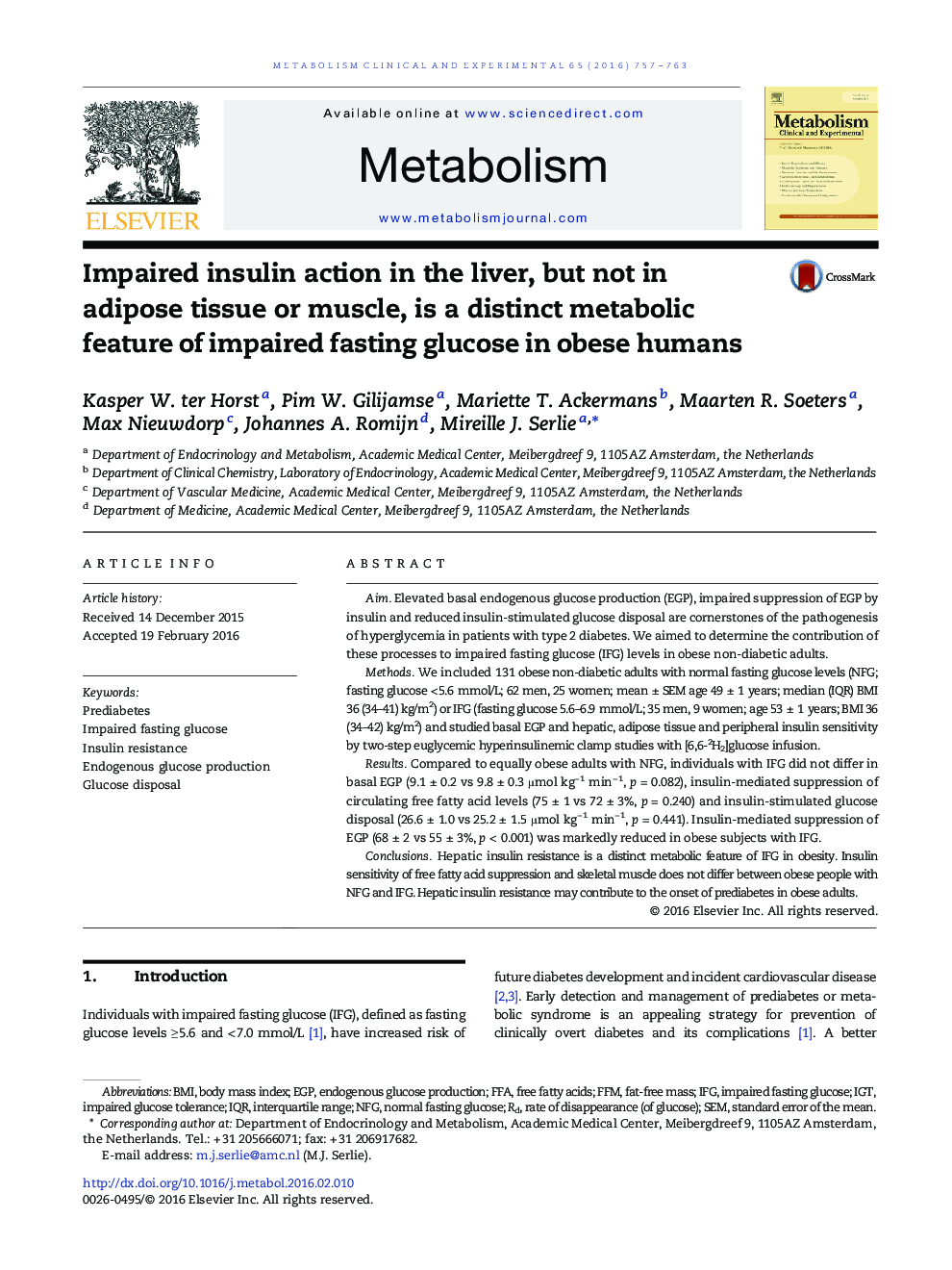| Article ID | Journal | Published Year | Pages | File Type |
|---|---|---|---|---|
| 2805473 | Metabolism | 2016 | 7 Pages |
AimElevated basal endogenous glucose production (EGP), impaired suppression of EGP by insulin and reduced insulin-stimulated glucose disposal are cornerstones of the pathogenesis of hyperglycemia in patients with type 2 diabetes. We aimed to determine the contribution of these processes to impaired fasting glucose (IFG) levels in obese non-diabetic adults.MethodsWe included 131 obese non-diabetic adults with normal fasting glucose levels (NFG; fasting glucose < 5.6 mmol/L; 62 men, 25 women; mean ± SEM age 49 ± 1 years; median (IQR) BMI 36 (34–41) kg/m2) or IFG (fasting glucose 5.6–6.9 mmol/L; 35 men, 9 women; age 53 ± 1 years; BMI 36 (34–42) kg/m2) and studied basal EGP and hepatic, adipose tissue and peripheral insulin sensitivity by two-step euglycemic hyperinsulinemic clamp studies with [6,6-2H2]glucose infusion.ResultsCompared to equally obese adults with NFG, individuals with IFG did not differ in basal EGP (9.1 ± 0.2 vs 9.8 ± 0.3 μmol kg− 1 min− 1, p = 0.082), insulin-mediated suppression of circulating free fatty acid levels (75 ± 1 vs 72 ± 3%, p = 0.240) and insulin-stimulated glucose disposal (26.6 ± 1.0 vs 25.2 ± 1.5 μmol kg− 1 min− 1, p = 0.441). Insulin-mediated suppression of EGP (68 ± 2 vs 55 ± 3%, p < 0.001) was markedly reduced in obese subjects with IFG.ConclusionsHepatic insulin resistance is a distinct metabolic feature of IFG in obesity. Insulin sensitivity of free fatty acid suppression and skeletal muscle does not differ between obese people with NFG and IFG. Hepatic insulin resistance may contribute to the onset of prediabetes in obese adults.
